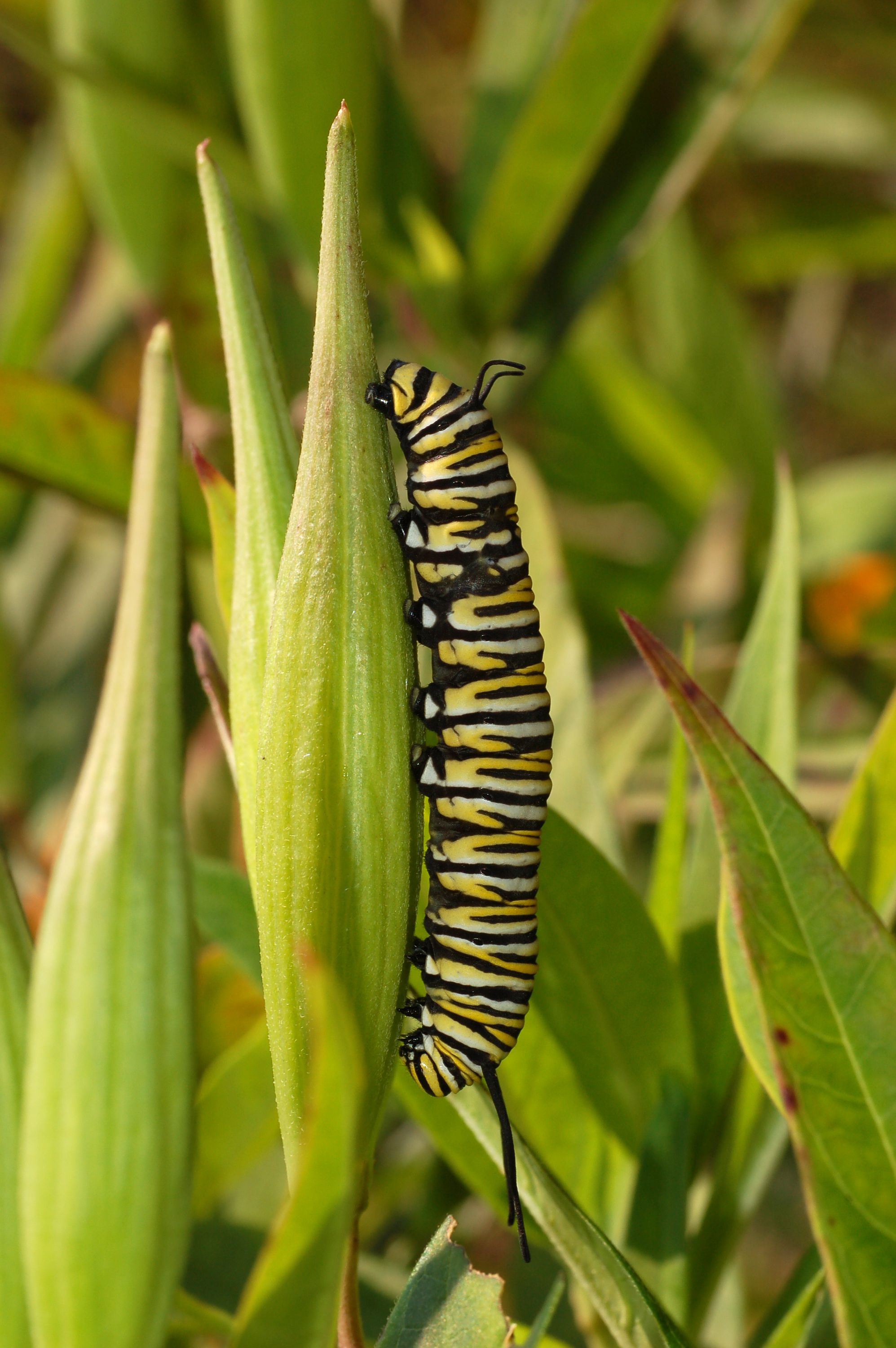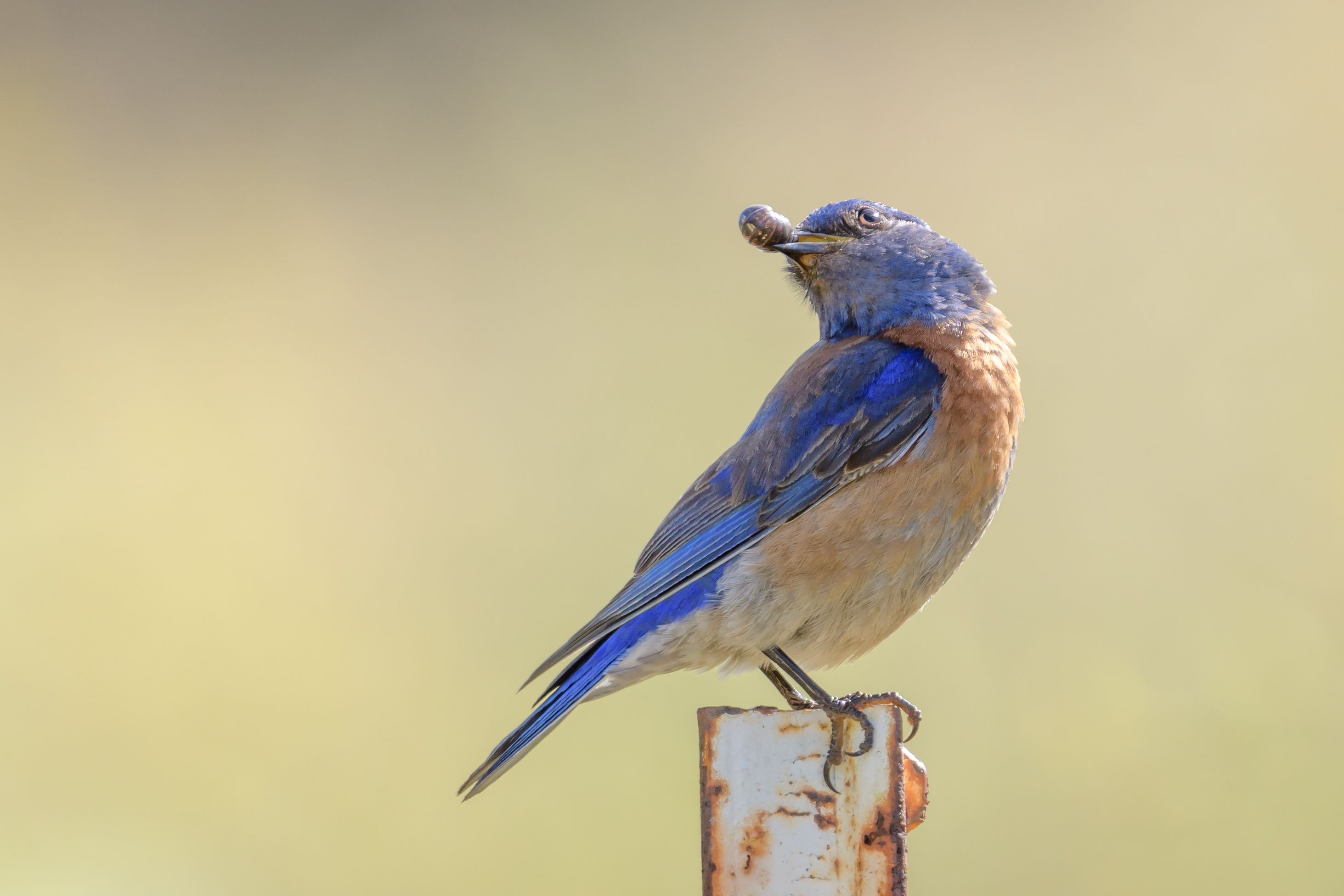Spoon Theory & Spell Slots
Many people with chronic health issues use a metaphor called spoon theory to illustrate how chronic illnesses or mental health issues can limit the number of activities a person can do in a day. The basics are thus: every day, you have a number of spoons. Every activity you do during the day uses a spoon. So if you start with five spoons, you can only do five activities. Now imagine that cooking a meal takes a spoon, but so does eating the same meal. Before breakfast is even cleaned up, you’re running low on spoons. Some activities may take more spoons, such as getting yourself to a doctor’s appointment, calling the IRS, or having a video call with your boss.
This theory is simple for a reason. It can be applied across situations, adapted to an individual, and easily explained to anyone who might not understand energy rationing, but I thought it might help to illustrate how I’ve adapted the theory to suit me.
For me, it helped me finally start to get a grip on why my daily task-lists would go half-finished every single day. Instead of filling a page with tasks, I started to realize that I had only so many spoons, and that I had to narrow down my lists, not just by number of activities, but by the complexity of the tasks as well. Complex tasks take more spoons!
Soon enough, the lists started to get smaller, and more and more of the tasks started to get crossed off before the end of the day. I reached a bit of a plateau though, where I had limited the number of tasks to a certain amount, but some days most would go undone, and others I’d finish in a heartbeat. It took a while to recognize that this could partially be explained by the variance in the number of daily spoons.
If you’ve ever woken up from a night’s sleep and felt like maybe you’d been flattened by a bulldozer, you know what I mean. Some days, there just aren’t enough spoons, whether due to poor sleep, feeling unwell, the weather, what you ate right before you fell asleep, or any number of factors in our daily energy levels. Others, everything is working smoothly, and you have your max spoons.
When I had grasped this, I started to try to pinpoint the number of spoons each morning. Was it 5 or 10 or 15? How many video calls would I have that would soak up 3 spoons right off the bat? What tasks did I have that were small enough I might be able to group them together? These adaptations took some time to implement, but once I had, I could feel the difference; I was closer than ever to knowing how best to suit my energy. And yet…
There would be days where I would have enough spoons to get me to the end of the workday, but as soon as I needed to cook or eat dinner, I flatlined. It took a long time to see the pattern for this, if I’m honest, and I’ll tell you why: spoon theory assumes only one type of spoon.
Again, for a theory, this is perfectly acceptable, as simpler theories are easier to grasp and spread. For me, however, it became clear that I wasn’t operating with only one type of spoon, and by trying to force my energy to fit that model, I was finding that tasks that should only take one spoon were wearing me out fully.
Writing spoons, creating spoons, gardening spoons, logic spoons… this was the path I was heading down and realized the metaphor no longer suited me. So I pivoted and landed on spell slots, as shared with me by a friend, given the similarity between spoons and spell slots when thinking of complex tasks.
In Dungeons & Dragons, magic-wielders are given spell slots at various levels. Say 5 spell slots for level 1 spells, 3 for level 2 spells, and 1 for level 3. If the level of the spell slot is the complexity of the task, you can only use high level slots for complex tasks, but in a pinch, lower-complexity tasks can use higher spell slots. Since I had already gotten an instinctive feel for the complexity of certain tasks myself, I tweaked the idea a bit. I decided to think of my spoons as spell slots, with spell slots for different types of activities.
For example, I can only handle about 30 minutes to an hour of writing fiction in a single day. It’s slow-going, but it’s even slower if I burn out, so I’m okay with slow and steady. I converted this to two fiction spell slots. Writing non-fiction is different enough that I learned I can do both in one day, having enough non-fiction juice for one to two hours of effort. This, also, meant two spell slots. Throw in about four spell slots for logical work–anything from software development to research to design of some kind–two spell slots for creative work (anything from sewing to cooking), two for gardening and I had a good basis. Meetings, appointments, or even calls tend to take up any spell slots I have to spare; they burn me out no matter how well I try to plan around them, but I’ve been learning just how much I can take of a variety of activity types! I’ve even learned that sometimes the number of slots vary within each category.
This adaptable extension of spoon theory is really helping me learn how best to support myself each and every day so I don’t feel like I’ve been flattened by noon. I hope this might be able to help someone else too.
4 July 2022
mental-health
strategies
Repotting Spider Plants: A Quick Update
The other day, I shared what felt like a hundred pictures of my houseplants in their natural environments, and casually mentioned I’d be repotting two of them soon–namely, Arya and No One, the spider plants.
Arya was given to me by the same coworker who gave me Charlie, the one who sparked me to name all the plants. When Arya was handed over, she was in a Tupperware container with absolutely hydrophobic soil barely clinging to her roots, wilting, but with a bunch of plantlets hanging over the edge. So I took her home, got her a pot, and proceeded to let her do her thing. Spider plants don’t thrive on neglect, but they don’t need much attention either, so when I got around to checking on her, I watered her, pulled dying leaves, and nudged the plant-babies so they would touch the soil and grow roots.
After only a few months, both the main plant and the offshoots had exploded because they were finally getting what they needed, but this meant that Arya outgrew her pot even faster than I expected. So I did the natural thing and divided her rootball, putting a small portion in another pot, and giving Arya room to grow.
This is when disaster struck. Fungus gnats had been waiting for the opportune moment to strike, their eggs lying dormant in the bag of potting soil I used for filling out the spider plants’ pots. They are annoying to deal with, harm your plants, and spread way too easily. It was quarantine and triage time, and there were some victories, some loses. I had to use diatomaceous earth on the soil of all the plants in that room, had to limit my watering schedule even further, and install sticky traps. The baby plants that had been thriving began to suffer, their young roots not yet developed into tubers that could store water for months. A majority of them died off, and the recently-separated No One had a similar problem.
After many many months of effort, the fungus gnats were eradicated, but we’d reach the cool season, even inside our house, and the spider plants did not grow much more. I learned, in fact, that until they recovered from the shock, they wouldn’t be putting out plantlets. Baby plants can be produced by the hundreds under the right conditions, and those conditions include a slightly crowded pot. Now, they don’t like to be pot-bound, with no oxygen getting to the roots, and the roots slowly strangling themselves in their effort to find more room, but if the balance is right, the best way for these plants to spread is by shooting out plantlets that will find bare ground and root themselves, growing a colony in no time. Since I had removed the small portion of Arya and put it into it’s own pot, I had removed the pressure to create baby plants. This meant I had to wait.
I waited, and waited, but Arya never filled back in the middle of her pot, and the pot containing No One was rapidly getting too small. Spider plants grow tubers, thick roots that excel at storing water, but they also excel at applying pressure to pots. I knew that if I wanted No One to stay contained and not break out or kill itself trying to, it would need to be moved to a different pot. Around the time that realization hit me, it also struck me that Arya’s soil was staying wet way too long, and if I wasn’t careful, I’d run into another fungus gnat situation.
Wanting neither of those outcomes, I realized I did have a potential solution: rejoin the plants in their original pot together, swapping out the soil I’d used for a lighter mix that wouldn’t hold on to moisture for too long. Over the weekend, I did just that. Of course, I neglected to get pictures of the process, but suffice it to say, it’s a good thing I did it sooner rather than later.
Arya’s root system was not only suffering from the early effects of too much water in the soil–this causes oxygen deprivation–it was slowly strangling itself trying to find the oxygen it needed. The tubers looked healthy, but there was an inch-thick mat of smaller feeder roots that had woven itself together in the search for oxygen and nutrients. I disposed of the excessively wet soil, washed off the roots, trimmed them back a bit so as to make sure newer feeder roots would spread in a more natural pattern, and had my partner drill holes in the bottom of the now-empty pot. Providing drainage holes along with providing a lighter soil means that when I water the spider plants in the future, I can soak them in the shower or tub, let them drain, and then the roots will not be sitting in water, but will still get enough to thrive.
After that, I had to wrestle No One out of the pot. The feeder roots were barely below the surface, searching for ways to escape the tight confines. The tubers were in relatively decent condition, but slightly wrinkled, meaning that though I’d watered it only a few weeks prior, it wasn’t getting enough with each watering to fill up it’s storehouses. I cleaned the roots in the same way, checking for rot, and then carefully layered first rock (to be sure the soil did not clog the new drainage holes), then the lighter soil mix, laying in the tubers of the spider plants so that they were spread, not cramped, and yet didn’t have too much space, hoping that in the next few months, this means there’ll be more plantlets. Filling in the rest of the pot with soil, I compacted it slightly, just enough so that when I give Arya & No One their first good soaking in a few days, the soil won’t float.
I decided, after repotting, to wait a few days to water the plants, given that the largest chunk of them had just been released from an oxygen-lacking swamp. I’m giving the plants a few days to settle, recover from the shock of having their feeder roots disturbed, and they’ll get a nice soak to help them set up home.
Here they are now, together again.
 Arya & No One, home at last
Arya & No One, home at last
1 July 2022
houseplants
plants
Test-Talking
I love this phrase: “test-talking.” I first heard it from Tiff Arment on Make Do, a delightful podcast about making and doing creative things, and being an artist or an Artist. She was talking to her cohost Julia Skott about something–it doesn’t matter what–and mentioned that their conversations feel like “test talking,” wherein they can talk about a subject before they even know how they feel about it, and by talking to each other, they can figure out what they feel!
This is something I’ve mentioned multiple times on Above the Mess with Izzy, but I wanted to write a little more about it, because I feel as though I have used a test-talking technique in so many areas of my life without realizing.
The first way I test-talk is by talking with my partner face-to-face, or with friends via text, Discord, or video. I’ll be frustrated or grumpy and I’ll just start talking about whatever is on my mind, and by talking it out, answering questions, I’ll get to the root of the problem. It’s absolutely wonderful to have that outlet because brains tend to think in circles, coming back to the same pieces of information multiple times and somehow thinking they’re different. Once those pieces are spoken or written, it’s easier to see them, to manipulate them, to understand them.
The second way is on Above the Mess. We talk about subjects I didn’t even know I cared about until we talked about them, and its so intriguing to learn about myself in that way. I believe the same could be done without being recorded, but something about the intentionality of the exercise of sitting down with her every other week to talk about what we each bring to the table is very conducive to test-talking.
The third way is by writing these blog posts–I mentioned this on the latest episode of Above the Mess (episode 16). My blog writing process is as follows: brainstorm a bunch of random topics, slot them into my writing and posting calendar, and create an index card upon which to collect ideas about the topic. I may collect nothing, I may collect dozens of small bits of information, but either way, when I sit down to write, I start with a blank screen in my favorite Markdown editor, add a heading that tells me what the topic is, and I write in almost a stream-of-consciousness. I may backtrack to reword sentences, but I do my best not to go back and edit, or add links inline, or even double check my memory of the facts until after the article’s first draft is down. This way, I get everything out of my head, onto the page, and then I know what I really think. The edit comes after, with pictures, links, sources, fact-checking, and even adding additional thoughts that pop up as I go.
In fact, I do nearly the same for fiction writing. I may plot out a story in advance, but when I sit to write a scene, I have the goal of the scene in mind and nothing else. I let the characters speak to me on the page–in this case, a physical piece of paper–and worry not about grammar, spelling, or even details like the name of a character I introduced and promptly forgot about six chapters later. I will just write <insert name of character here> and catch it in the edit. If a thought occurs to me that has nothing to do with the scene, I’ll write in down inline and call it out with a bunch of doodles, or if I’ve planned ahead, I’ll put it on the sticky-note stack I try to keep nearby (but often move around because I need them everywhere).
The fourth–and probably not final–way I test-talk is by talking to myself. Literally. I will go for a walk with my headphones in (to look like I’m talking on the phone, because humans, in general, do have some very strong taboos about talking to ourselves in public) and start up a recording. I use either Voice Memos or Just Press Record. The recording allows my brain to let go of the fear of forgetting what I said, as well as triggers a type of mental-shift that makes it easier to get past the block of talking to myself by reframing it to “I’m talking to future-Madi” or even “I might send this to a friend so they can help me see anything I missed.” I’ve worked through knots surrounding my career, brainstormed projects, and vented thoughts about a frustrating conflict this way, and all left me feeling as though I had clarified my thoughts, distilled them down to a form I could use. In the case of the conflict, it even let me take a deep breath and let it go; I no longer felt the urge to try to reason it out with the other person, even though I knew reason wouldn’t work. I just needed to talk it out.
Overall, I love this method of thinking. I think I’ll end up finding more ways to test-talk, to test-think, and to learn what I actually feel about a topic–it’s a really powerful strategy.
29 June 2022
introspection
strategies
What Can You Do; Do What You Can; What You Can Do.
I said the other day, “current events are going to happen.” It was meant to be a joke, a slightly-snide commentary on the news cycle, and above all, the truth. I was referring to the method behind maintaining a backlog of posts on this website so that if anything should knock me down for a while, I would have runway to use before I ran out of posts. I thought current events, if they were significant enough, would push my backlog of posts out a few days so that I could give myself space to write my thoughts on whatever might be affecting me or my state, country, or home.
One of those events came sooner than I wanted, though it wasn’t much of a surprise, given previous leaks. The Supreme Court in the United States overturned Roe v. Wade, a landmark case decided in 1973 that guaranteed women the right to choose to have an abortion under the constitution. A follow-on case in 1992, Planned Parenthood v. Casey, upheld that decision. Three decades later, they have overruled both of those decisions, holding that there is no constitutional right to an abortion.
Thousands of others have said it better; if life is what we are protecting, banning abortion is not the way to do that, and yet… here we are again. The decision by the Supreme Court puts the onus back on the states to create laws surrounding the issue, and my state is very likely to ban abortion.
It’s disheartening and truly terrifying to say the least. Other decisions that could be overturned in this same way are the right for same-sex marriages and access to birth control. To me, the state of the country feels a lot less solid now, though it felt spongey at best before.
So what can I do? I’ll do what I can. Below are some resources that I’m using to help myself navigate this reversal, if you’d like to join me. In the in-between times, I’m going to be taking care of myself. Times of turbulence are the times it’s easiest to forget ourselves. We can’t save the world if we can’t save ourselves first. Stay safe, friends.
What You Can Do:
28 June 2022
current-events
womens-rights
Naming My Houseplants
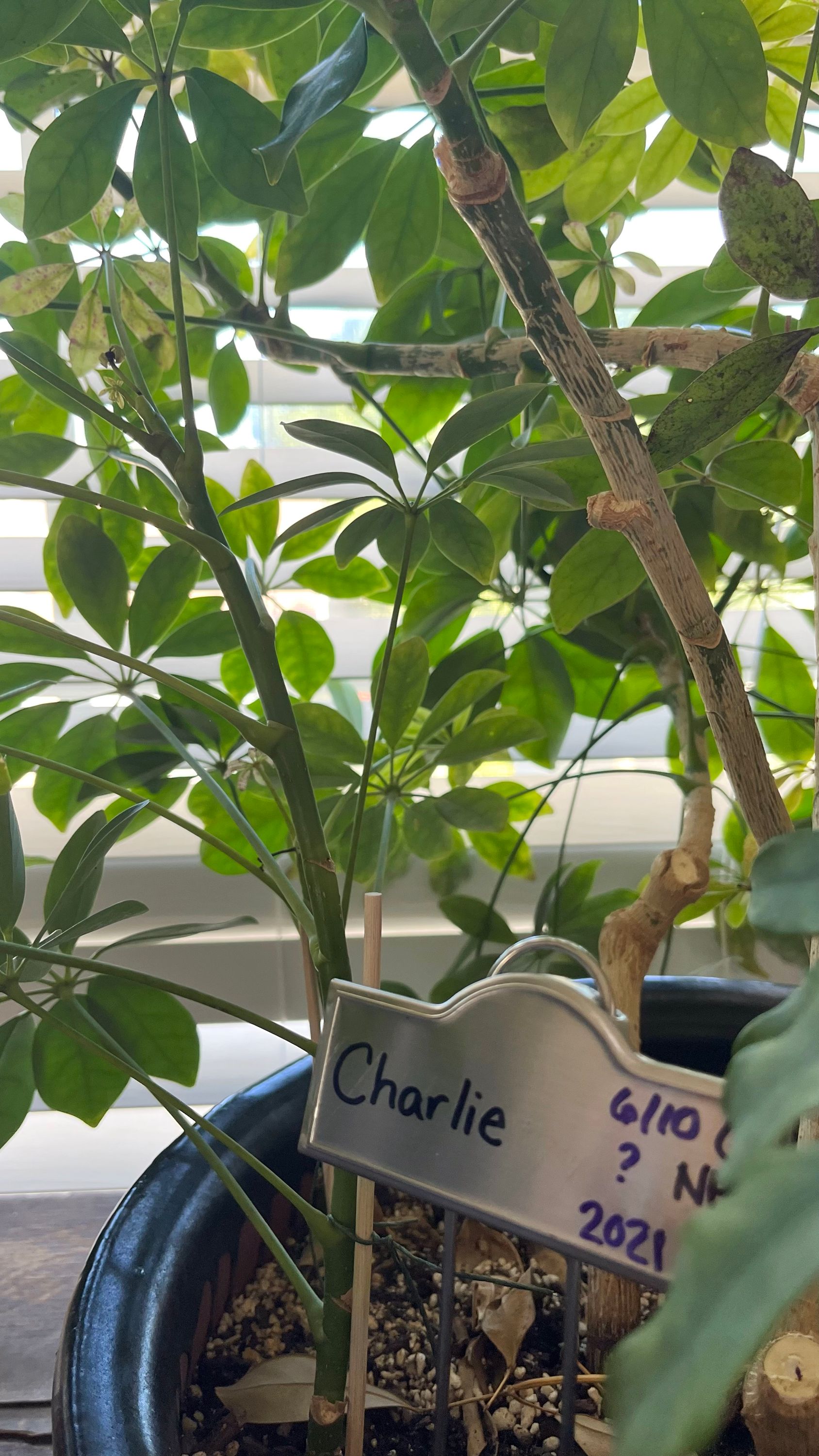 Charlie, the money tree–glamour shot!
Charlie, the money tree–glamour shot!
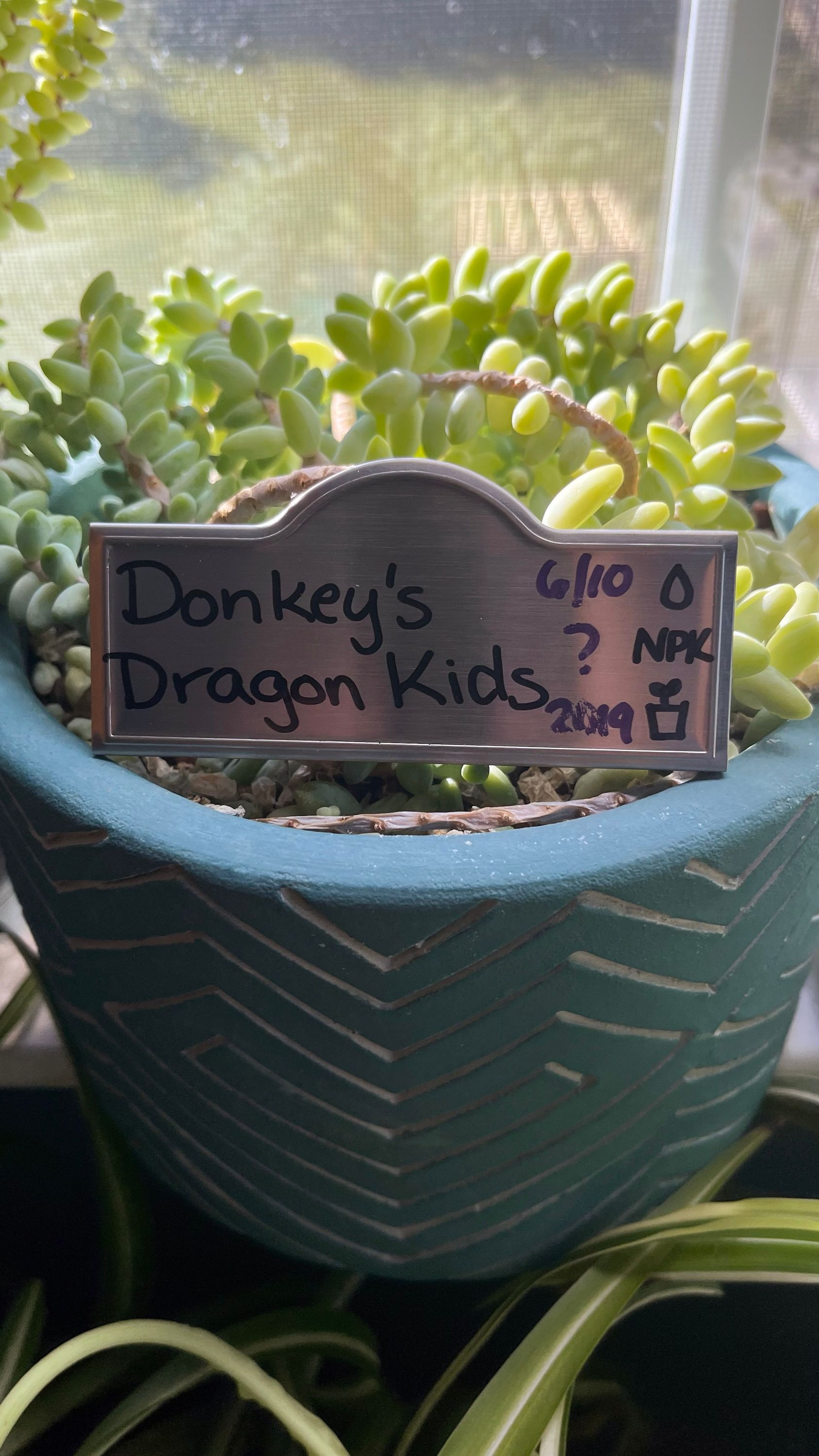 Donkey’s Dragon Children (Burro’s Tail)
Donkey’s Dragon Children (Burro’s Tail)
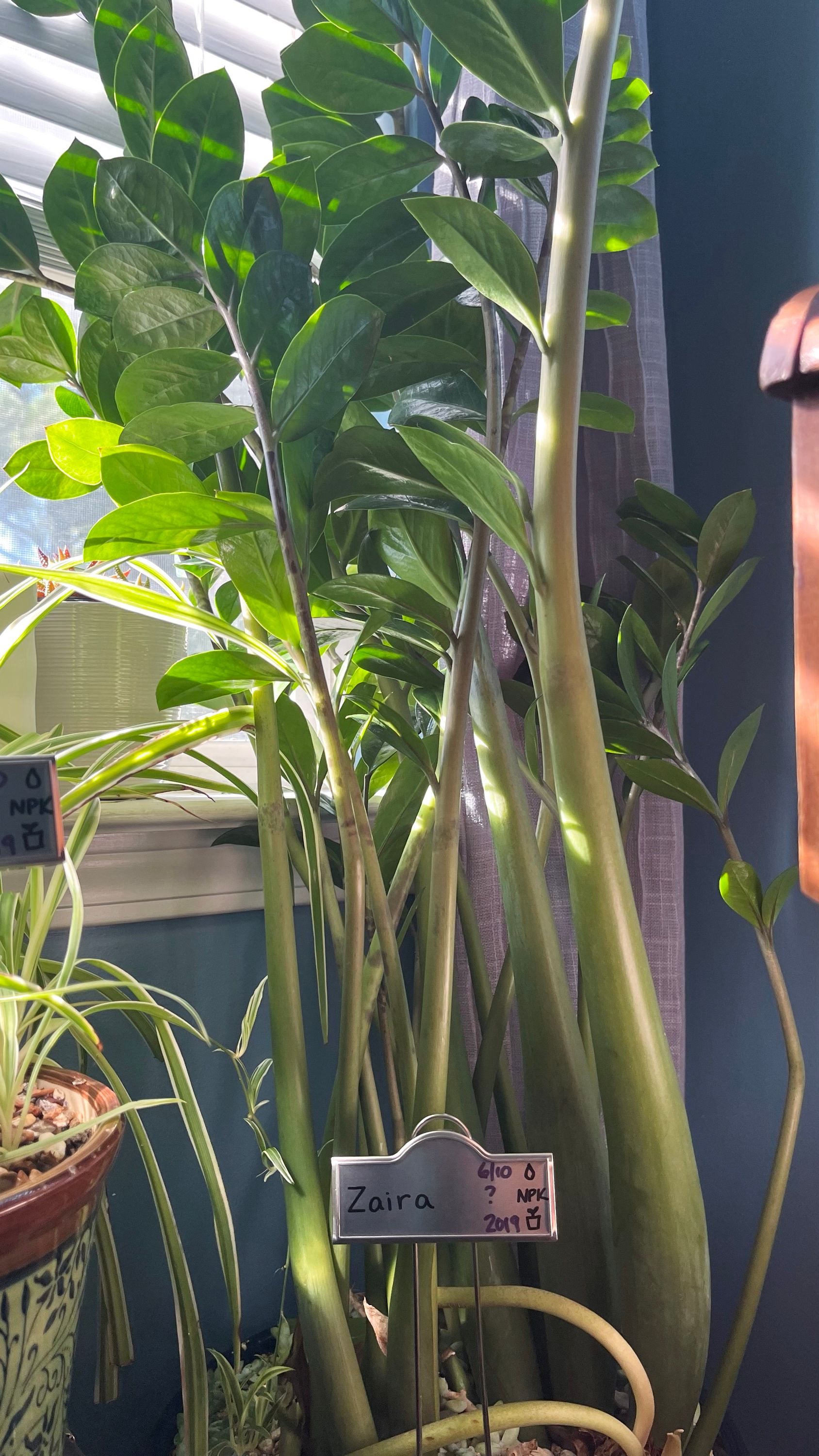 Zaira, the five-foot tall ZZ plant
Zaira, the five-foot tall ZZ plant
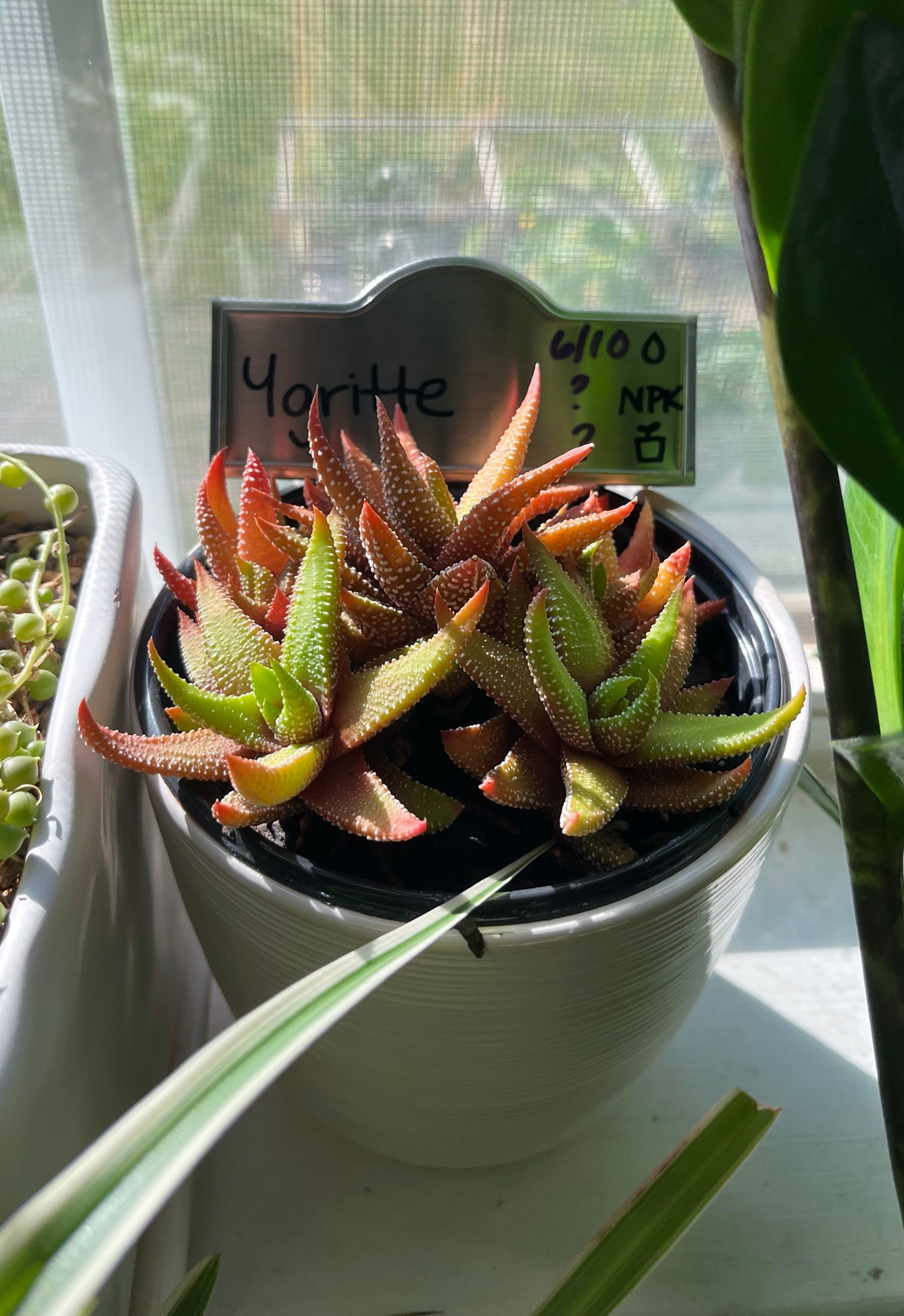 Ygritte, a Fire Red Haworthia
Ygritte, a Fire Red Haworthia
 Alfred’s child clone, Fred
Alfred’s child clone, Fred
 Beasley the Parlor Palm
Beasley the Parlor Palm
 Nestor, a Pothos
Nestor, a Pothos
 Zane, a snake plant
Zane, a snake plant
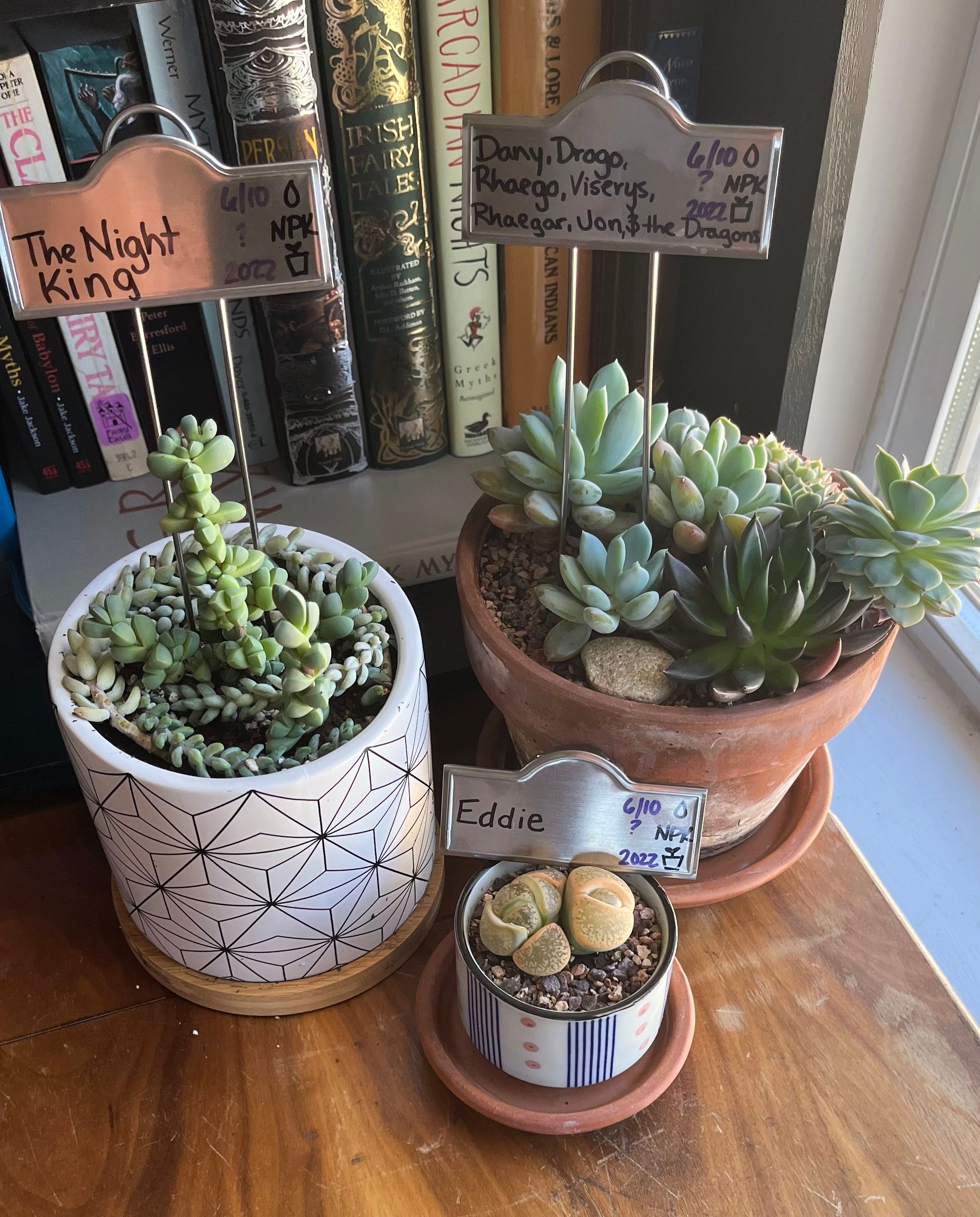 The Night King, an Ice Plant Succulent, Dany’s family of echeveria succulents, and Eddie, the living stone!
The Night King, an Ice Plant Succulent, Dany’s family of echeveria succulents, and Eddie, the living stone!
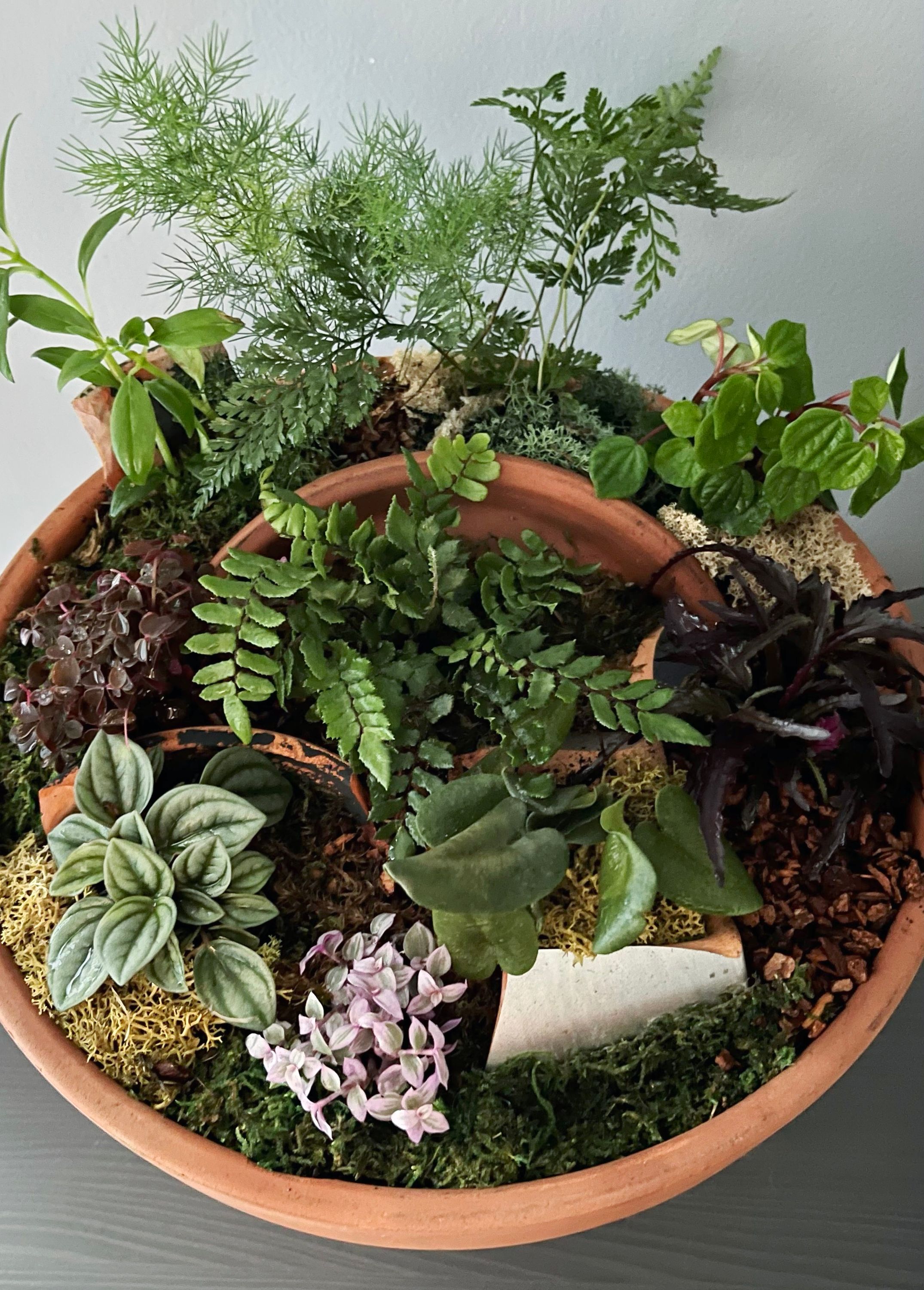 The Dryads of the Fairy Garden
The Dryads of the Fairy Garden
Any houseplant person can tell you that their plants have personality. I’m not sure when I started dealing with my own on that level, but soon afterward, the dang things started collecting names. It started with Charlie, my Schefflera friend who was given to me by an old coworker that didn’t know what to do with him. He was leggy, temperamental, and drank water like a fish, but never seemed to grow! I’m not sure why that made him a Charlie, but Charlie he became, even after I gave him a new pot like a witch’s cauldron and a prune so he could get a bit more bushy. He’s still temperamental, but he’s doing better, and a trend was formed. My houseplants needed names so I could berate them for being dramatic or soothe them when the spider mite infestation occurred–I blame the store-bought basil that’s been relegated to the garden–or talk about them casually like they’re pets… which they are.
Some of the names are multi-layer puns or references, like the Parlor Palm that became Palmela Beasley, which got shortened to Beasley. The Burros Tail became Donkey from Shrek… and then when it divided itself, it became Donkey’s Dragon Children. The pothos in the kitchen is Nestor, named after the tropical storm that crashed our wedding day, at which the pothos was being used as a small decoration on the guest book table; note, this is better than naming my as-yet unborn first child after the storm, as was suggested by my maids of honor.
Others are named based on their common names. Like the ZZ plant I’ve had since 2016 who is now dubbed Zara–named after a character in one of my favorite book series–and her daughter (an offshoot I potted out) Zuri. Zuri is not pictured as she currently resides on my desk at an office I haven’t visited in months, but my coworker has said she’s looking great and gives her a watering now and then. Even so, I’ll be picking her up soon because I trust no one to tend my plants for longer than a week without accidentally killing them.
Still more are named after characters that only vaguely relate to their names or characteristics, like Zane the snake plant, thus named because of a snake-shapeshifter in yet another series I’ve long loved. There’s the Fire Red Haworthia named for Ygritte because she too is kissed by fire. The ice plant succulent is called the Night King, for what seems like an obvious reason. The mixed pot with a variety of echeveria succulents has a name tag that sports a list–Dany, Drogo, Rhaego, Viserys, Jon, and the dragons. There’s a plant for each in the pot; the black one represents Drogo, the tippy ones closest to the window are Dany and her dragon children, Rhaego is the small white one to the left, a mix of his parents in a way, whereas the Targaryen men are closest to the back. The two spider plants, Arya and No One, will soon be back in the same planter after being divided many years ago. When I repot them, I’ll need to put some drainage holes in Arya’s pot, as she’s struggling due to water remaining in the soil too long.
 Arya & No One, Variegated Spider Plants
Arya & No One, Variegated Spider Plants
Finally, there are the Dryads, the mix of plants as different from each other as can be, in the Fairy garden. There’s Eddie the lithops, or living rock succulent. He seems strong, but he’s got a heart of gold, and keeps on growing and growing! And last, but certainly not least, Alfred, the string of pearls, and his young clone, Fred. One of them is quite fancy, and the other is very much not.
I have a few plants that remain nameless–a Peperomia, a Jade, cuttings of Nestor that I’m propagating still, and a Green Pagoda–but they’ll show me their names soon, I’m sure.
One added benefit of giving my plants names, and their name tags–I made room on each to track the last time I watered, fertilized, and repotted them. As you can tell by the pictures, I last fertilized so long ago, I can’t even remember when it was. And repotting has been put off too long for most of the plants, but now that I recognize that, I can rectify it!
 Alfred, the String of Pearls
Alfred, the String of Pearls
24 June 2022
houseplants
plants
Veggie Garden Irrigation
I live in a weird climate for keeping a vegetable garden. We have very few days below freezing in a year, we normally get 2-3″ of rain per month year round, and the summers are brutally hot and humid. Now, the low amounts of frost mean we can theoretically grow things under row covers during months when usually gardens may go fallow, the early and extended growing season due to warmer springs and autumns means we can produce an absolutely overwhelming amount of food, while the heat and humidity mean pests and needing to provide shade for crops that you usually would give 12+ hours in the sun.
Theoretically, the sheer amount of rain would mean we wouldn’t need to water the garden too often. This does not work in practice. The heat rips the moisture out of the soil and all sorts of plants wilt in hours under the brutal sunshine, and though the rain comes down in buckets, it’s becoming more and more common to get one rain day of 1-2″ every few weeks rather than lighter rain days more frequently. All of this adds up to needing to water our vegetables every single day before the sun has risen so their roots can soak up whatever they can before it all evaporates.
Now, I love gardening, but I hate watering. I hate standing out there with a hose, trying to remember how long I need to stand at each bed spraying the ground and hoping the soil won’t bounce up and infect my plants with some fungus that means our harvest will be decimated. Added to the fact that surface watering is less effective, I knew I’d need to figure out drip irrigation for our beds.
I thought I’d manage it last year, but I never got round to it. This year I was determined, first because it wasn’t even April and the temperatures were soaring–our heat-resistant lettuces bolted before my birthday this year–second, because I’ve become increasingly interested in sustainable practices in the garden, and conserving water would be an ideal way to do this, especially as growing our own veggies helps us reduce our grocery bills as well.
After a little bit of research, I found that I’d need to connect to an existing irrigation head right next to our first garden bed, convert it to a drip line head, and lay out 1/2″ black irrigation tubing to get the lines where we needed them. From there, it would be 1/4″ drip tubing with 1 gallon per hour built in emitters laid out flat on the beds and paths, and small drip emitters for any of the potted plants–like our peppers, berries, and potatoes.
It was an adventure in digging up hard dirt, what felt like half-a-dozen trips to my local home improvement store to replace parts I didn’t know replacing or getting more of something I was sure I had enough of the last time. Add in the distractions of some fun native plants and figuring out how to rig up an emitter to fill up our bird feeder, and it took a grand total of two weeks to get everything settled. There are still finishing touches to be done–adding top soil to cover some eroded spots where I needed to dig to find the irrigation lines (as well as covering it with erosion fabric), adjusting a few emitters that don’t work quite right, and some additional sections of the yard that need some irrigation heads swapped out, we’ve got a working irrigation system!
I will say, when I need to do this again, I’m going to do it differently. First, if I can passively irrigate my crops, that’s what I want to do. There are many ways to passively irrigate, including buried clay pots–ollas–that allow plants to pull water into the soil as needed. We’ve got a few of those buried, but their effectiveness is hard to judge so far. Manually filling is the most common method, but even these can be hooked up to irrigation systems that fill them up automatically. Building berms or catchments into a garden to allow rainwater to collect is another way of increasing passive water collection, but with raised beds, I didn’t consider this option. Other methods include deep pipe irrigation–again, manual or automatic are both possible–wick irrigation, and supplementing with water collected in rain barrels.
Second, if irrigation piping is still necessary, I would insist on setting the garden on a different zone from any lawn sprinklers. Our current system is set up such that our backyard sprinklers must be on while we’re watering our garden. I’m not much of a person for lawns–grow food, not lawns, people–so watching the sprinklers water ground that produces nothing but grass is disheartening. We’ve already planned to dig up the heads and swap them out with new versions that will allow us to cap them off, but my first choice would have been separate zones entirely.
Coming up next in garden projects–adding shade cloth tunnels so our plants can benefit from less direct sunshine. It sounds counterintuitive, but I’ve seen results already; we’ve been trying to grow potatoes for three years and haven’t gotten a single crop. I decided to move the potato bags into the shade provided by our fence. The potatoes benefit from the morning sunshine, but during the hottest part of the day, they get shade. Wouldn’t you know it, we’ve got potatoes growing well enough that this is the first time I’ve seen them in flower. After that, I believe it’s rain barrels, then re-wilding the fence line with natives of all kinds of varieties to bring biodiversity back to our yard–enough so that maybe the birds will start plucking the caterpillars off our blueberry bushes and feeding them to their nestlings.
22 June 2022
projects
veggie-garden
Bringing Nature Home
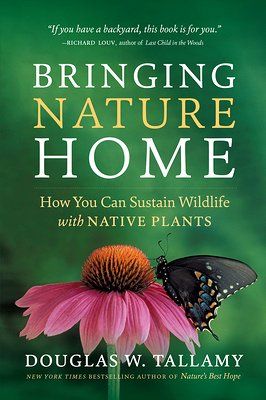 Bringing Nature Home
Bringing Nature Home
I’m going to apologize in advance because I’m going to point out something that’s been missing from your life for a while. It’s been disappearing so slowly and over such a long time that you probably haven’t noticed. The minute I point this out, you won’t be able to unsee it.
There are far, far fewer bugs around now than compared to your childhood.
Let that sink in. If you’re like me, you have at least one memory of riding in the car as a child, with the headlights on as you drive down a darkened road in the woods or through fields. The headlights are shining on the thousands of bugs ahead of you, and it’s inevitable that some will hit the window. By the time you get to your destination, the windscreen will be smeared with the remnants of dozens of the doomed creatures. It used to fascinate me to watch the air pillow around the car swoop some of the bugs up and over in an arc that made it seem like we were driving through a star field.
That doesn’t happen anymore. I’m behind the wheel of the car, the headlights are on, and I see some bugs… but no more star fields, no more stopping to clean the windshield on a long trip, maybe two or three bugs meet the windshield on a 4-hour journey, even through the boggiest part of my state.
I’d bet the same is true for you, especially if you’re in the United States. I have it on good authority that some in England have seen the same. It may not be a worldwide phenomenon, but it’s certainly happening.
The saddest part of this for me? I didn’t notice it either, until it was pointed out to me in a book. That book, Bringing Nature Home by Douglas Tallamy, made me look up from reading it and stare out the window and try to remember the last time I had seen the night swarm with tiny wings.
Bringing Nature Home was a fascinating read from cover to cover. In the book, Tallamy puts forth a simple argument: we are killing off the bugs and thus the entire food chain by relying on non-native plants to adorn our yards. In order to save the bugs, the birds, the trees, we need to bring native plants back to our yards and gardens, and we need to do it now.
The chain of logic is a relatively simple one: there are bugs out in the world that survive by eating plants, or other bugs that eat plants, such as the ever-fascinating monarch butterfly. The caterpillars can only be born on milkweed plants and can only eat milkweed. No milkweed? No monarch butterflies.
It’s not all about the butterflies of course. Tallamy argues that even the less charismatic bugs are necessary because they are a food source for birds, especially for baby birds. We may fill our bird feeders with seed, but bird parents only feed their babies wriggling insects with a bunch of protein. No insects of choice? No baby birds will survive long enough to make it to the feeder.
So how can we help? Well, first, get rid of the invasive plants in our area of influence. Kudzu is the plant every United States southerner knows; a noxious vine brought over here to help with erosion, it spreads and spreads and spreads, covering ground and shrub and tree until all is kudzu and there’s nothing left. Sure, invasive kudzu bugs like the leaves… but nothing else does. Another example is Japanese honeysuckle–it has taken over forests in the northern US–that smells nice and may provide nectar for bees, but it doesn’t host any of our native insects, and can decimate young saplings with it’s growth rate. The examples go on.
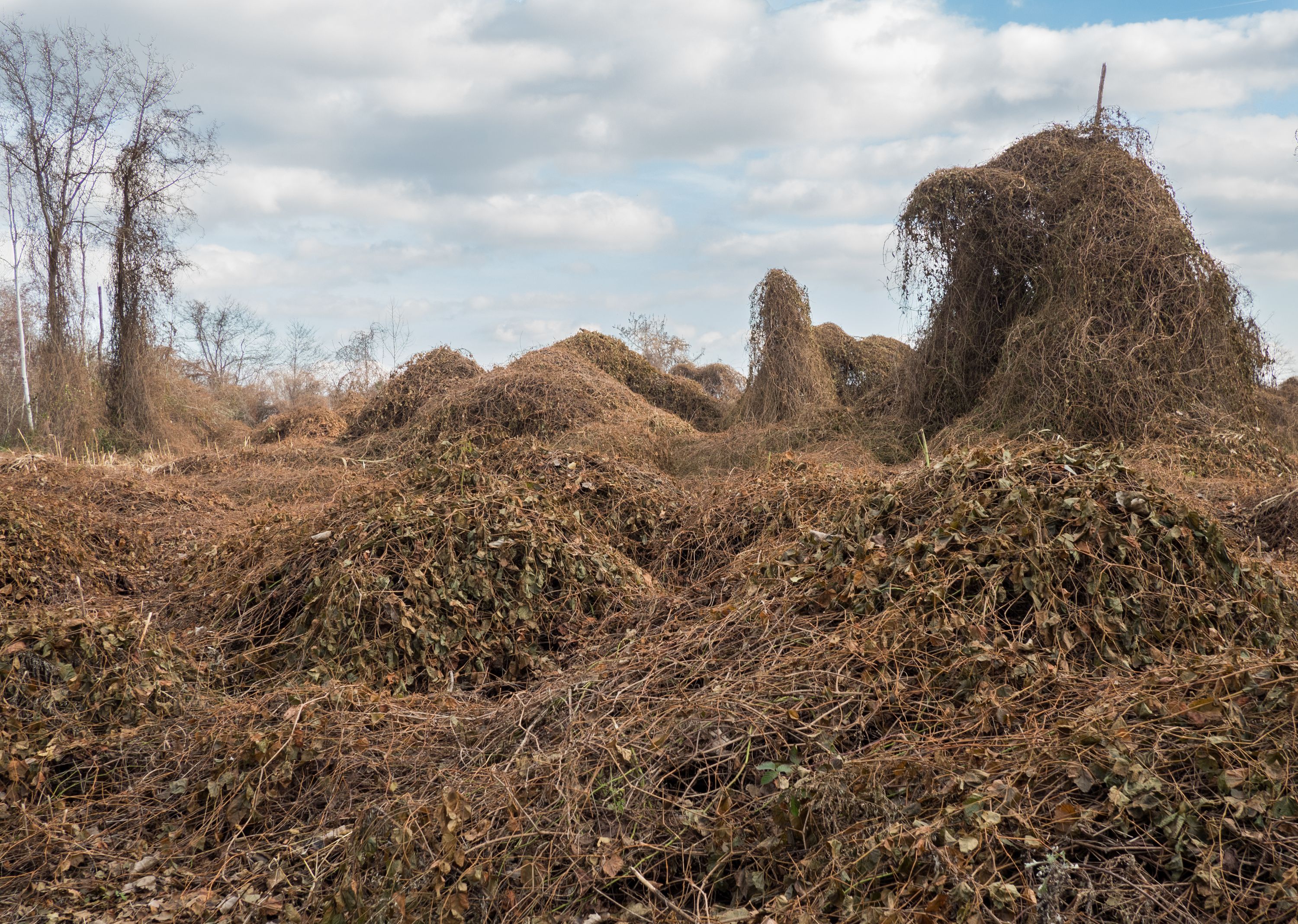 Dormant Kudzu
Dormant Kudzu
Rhododendrites, CC BY-SA 4.0, via Wikimedia Commons
 River Birch bark
River Birch bark
Photo by David J. Stang, CC BY-SA 4.0, via Wikimedia Commons
 Redbud in early spring
Redbud in early spring
Msact, CC BY-SA 4.0, via Wikimedia Commons
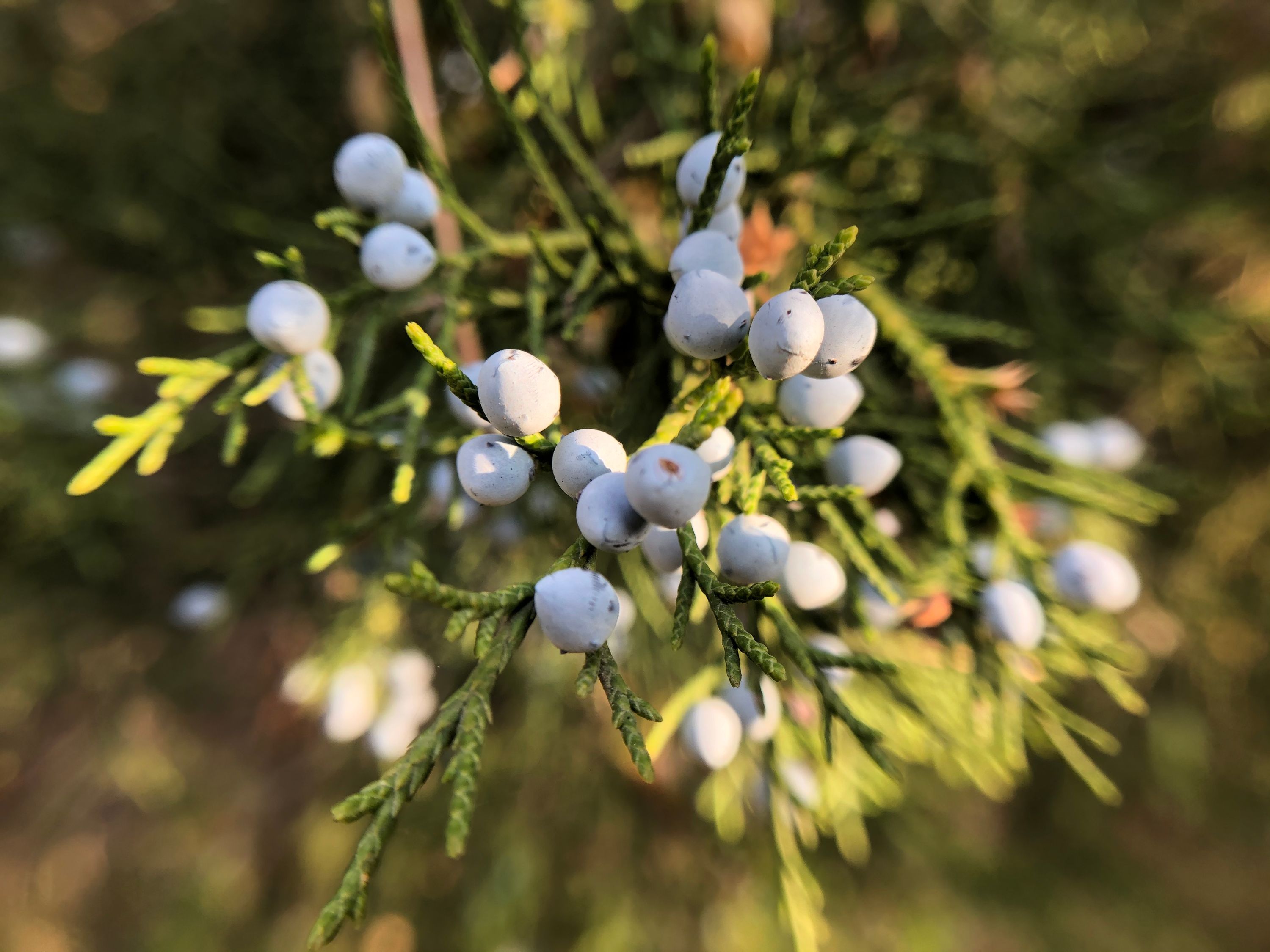 Juniperus virginiana, Easter Redcedar
Juniperus virginiana, Easter Redcedar
GeoO, CC BY-SA 4.0, via Wikimedia Commons
 Garden Phlox
Garden Phlox
Atilin, Public domain, via Wikimedia Commons
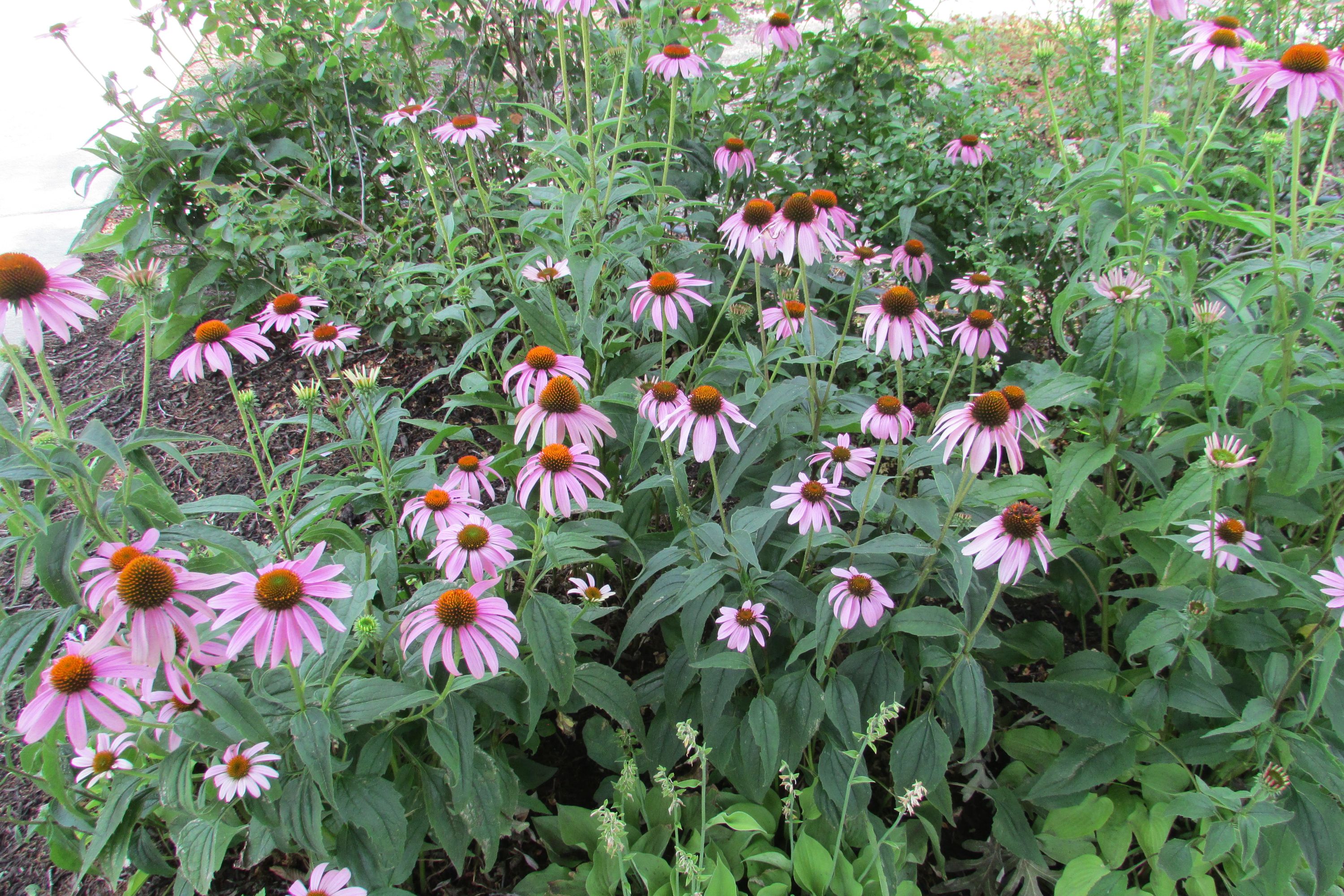 Drifts of purple coneflowers
Drifts of purple coneflowers
Chris Light, CC BY-SA 4.0, via Wikimedia Commons
 A magnolia in full bloom
A magnolia in full bloom
M2545, CC BY-SA 4.0, via Wikimedia Commons
 Passionflower vine
Passionflower vine
John Flannery from Richmond County, North Carolina, USA, CC BY-SA 2.0, via Wikimedia Commons
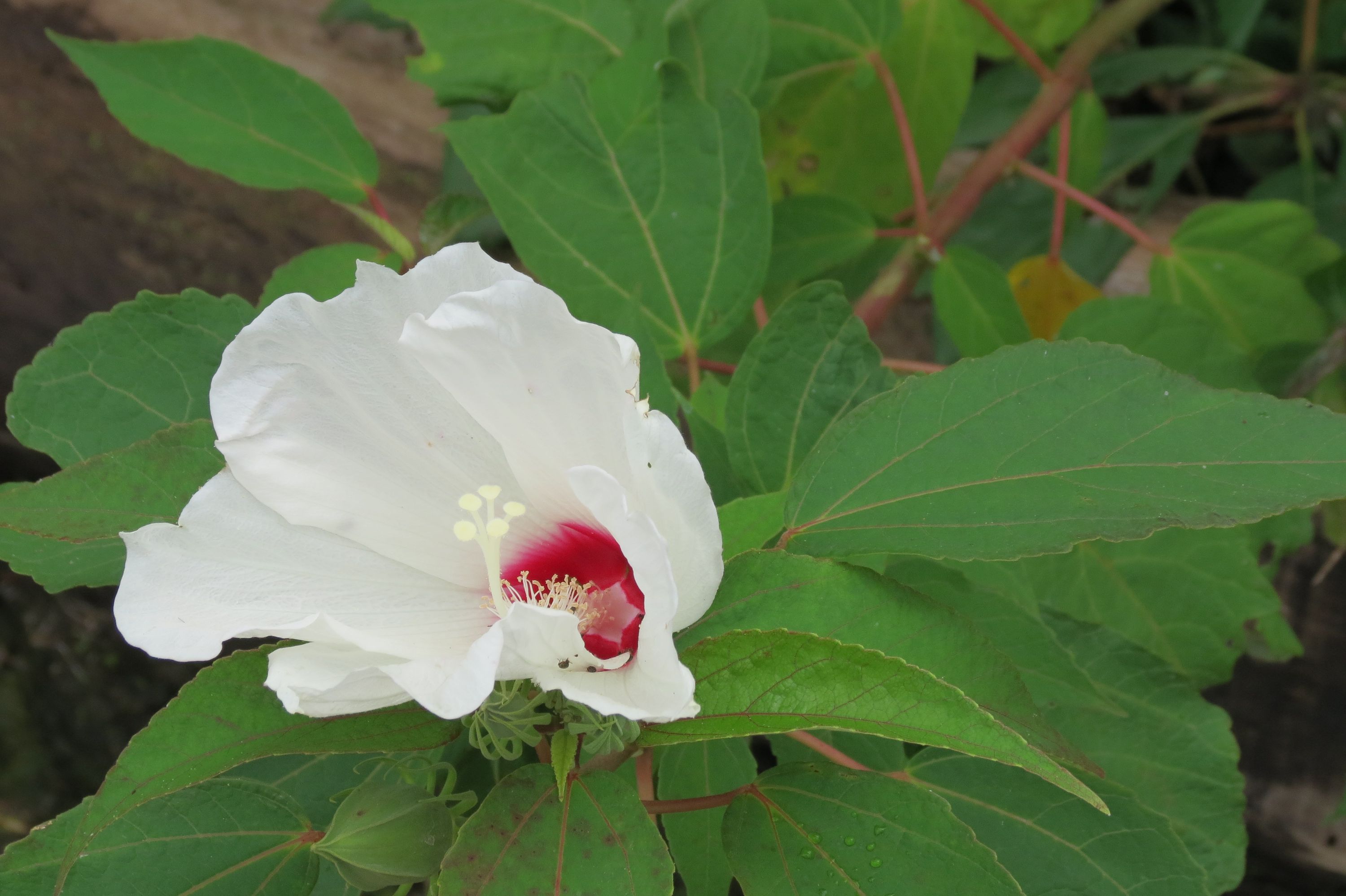 Swamp Rose-Mallow
Swamp Rose-Mallow
vastateparksstaff, CC BY 2.0, via Wikimedia Commons
Second, replace the non-native plantings in our gardens with natives. One example that is brought up is non-native azaleas. Commonly planted along the foundations of houses, they have showy flowers and are evergreen, whereas native azaleas are just as showy (my favorite being the pinxterbloom variety) but are less susceptible to the common diseases and host a number of species that use their leaves or their pollen for food! The reason non-native plants are in our gardens are for things like “pest-resistance”, aka deer don’t like to eat them, and neither do bugs. Why? Because they aren’t in the natural diet of either. And while that seems good at first glance, over time, this leads to fewer bugs and fewer deer.
Third, add more plants to your yard, and add them in wild variety and abundance. If you’ve got a front garden, how much of it is covered in mulch? How many times do you need to pull weeds in a week to keep it looking pristine? Probably too much and too many. This fall, why don’t you spread native seeds by the handful and see what pops up? Plant coneflowers in drifts–they’ll attract pollinators of all kinds, as well as birds who forage for seeds. In the fall, other insects will make homes in the stems and feed the birds after the winter cold has passed! If you’re lucky, a cute little garden snake might hide under the leaves and catch prey in a yard where it might never have wandered. Plant a tree in your backyard! There are so many varieties that are native to your location, I beg you pick one of them. Maybe a magnolia for their gorgeous leaves and gigantic flowers? Or an oak tree that will shade your house for decades if tended properly? Maybe a river birch if you live close to a water source. The possibilities are endless. If you can, plant multiple trees! Plant them as specimen trees–on their own, standing tall–or in clusters so they grow like a family and create a shady space beneath their boughs. Watch the birds come home and build a nest between their branches.
If you are in the United States, Bringing Nature Home has lists of trees and plants you can bring into your backyard to help the bugs, to help the birds, to help ourselves.
For my part, I have plans to turn the top third of our backyard into a native plant forest, with a magnolia, a redbud, a few black cherry trees, and some maples. There are three volunteer junipers growing along the side of our yard already that I’m going to tend through their infancy, along with some passionflower and muscadine vines. The raspberries in our garden will soon be downwind from the native raspberries and blackberries that have popped up now that we stopped mowing near the junipers.
Along the side of our house, we have one full-shade area and one full-sun area. I’m thinking a boggy garden on the side that never fully dries, bringing in golden canna and elderberry. As for the side that gets the full brunt of the sun, maybe some taller shrubs trees to help shade the house a bit more and help keep the house cool. Or maybe I go with some prairie plants like asters and goldenrod?
Our front garden has been slowly turning into a native plant haven already. There are a few non-natives, like the crepe myrtle that sprung up one year as a bush and we helped grow into a tree, or the lungwort and rosemary just off the path. But adding in phlox–both creeping and garden varieties–a swamp mallow, some blueberry bushes and native grasses has already made mulching less of a concern and added riots of color.
Many of your local garden centers will have non-native or even invasive plants on display all year round because those are the plants that sell. But you cannot tell me a black willow is not just as gorgeous as the non-native weeping willow, or that a Bradford pear–that smells like death and cross pollinates to create horrible thorn monsters–would be better in any yard than a native cherry tree.
Bringing Nature Home was an eyeopening read, and it really made me excited to get my hands in the dirt and bring the bugs back. I’ve already seen the results: we have lightning bugs this year, a lack of which I never noticed until I saw the first flash of one just a few weeks ago. It made me want to sit out under the stars and watch them burn.
20 June 2022
books
native-plants
plants
LoreMasters by Tib Winterfield
I may or may not be biased (but definitely am a little bit) recommending this to you, but one of my great friends and DM extraordinaire Tib Winterfield has a weekly RPG newsletter aimed at bringing new monsters, ideas, and sources to the attention of DMs and players alike.
Tib opens each issue with a home-brew item, monster, or location every week, and oftentimes, one of my characters will make an appearance in the color text. Yes, I am a bit chuffed about it, what about it? So far, I’m amazed by his creativity, coming up with things like a key that turns the space behind any door into a veritable feast, a set of baddies who aren’t just carbon copies of one another, and an entire island map built for PvP!
Alongside his own creativity, Tib shares many more sources from across the RPG spectrum, from a solo-play called Train Tracks (which I am currently running for myself), a completely fleshed out Tea House, and multiple podcasts that are now filling my queue with inspiration!
Some of my favorite editions are linked below, but I really do encourage you to subscribe; it’s a delight in my feed reader every week! It’s hosted on Substack, so you can subscribe on Substack, if you have an account there, get it sent to your email or subscribe via RSS.
Favorite editions:
- The Isle of Death - featuring the PvP island mentioned above and a rather accurate depiction of how my character Empy bit the dust! Don’t worry, she woke up in a healer’s bed, annoyed that she’d gone through the indignity of being turned into a sheep.
- Melcad the Deestroyer - featuring a very interesting main baddie that can influence the game for your characters before they even know he exists, a card-based murder mystery game, and the aforementioned Train Tracks.
- Knowles Gnome Supplies - focused around a fantasy-world supermarket that, despite its name, is always staffed by a bored teenage dwarf. My character Nala has visited the original location in Nook and was baffled at the surly beast behind the counter. Love the way Tib brings practicality and fun together in so many of his creations.
17 June 2022
dnd
games
rpg
recommendations
Above the Mess Episode 16: Launched at Full Speed
 Above the Mess Logo
Above the Mess Logo
We discuss being ahead of schedule, Colin Firth diving into lakes, and road trips with cats.
Listen to Episode 16
15 June 2022
above-the-mess
podcast
Desk Day - June 2022 - Personal
Happy Desk Day everyone! It’s a tradition among my friend group to have a monthly Desk Day (on the 13th or the closest non-holiday weekday) wherein we share photos of our desks and solicit help, advice, or compliments on our current setups. It became a running joke that when I shared on Desk Day, I needed to post seven hundred photos because I have more than one desk; I have, in fact, 4 desks and a crafting table in one office, and my main desk serves two functions. In order to keep my Desk Day entries short, I’ve opted to show off one desk configuration a month.
This month, we’re starting with my favorite configuration: my main desk, as I like it set up when I am working on any of my small businesses or hobbies!
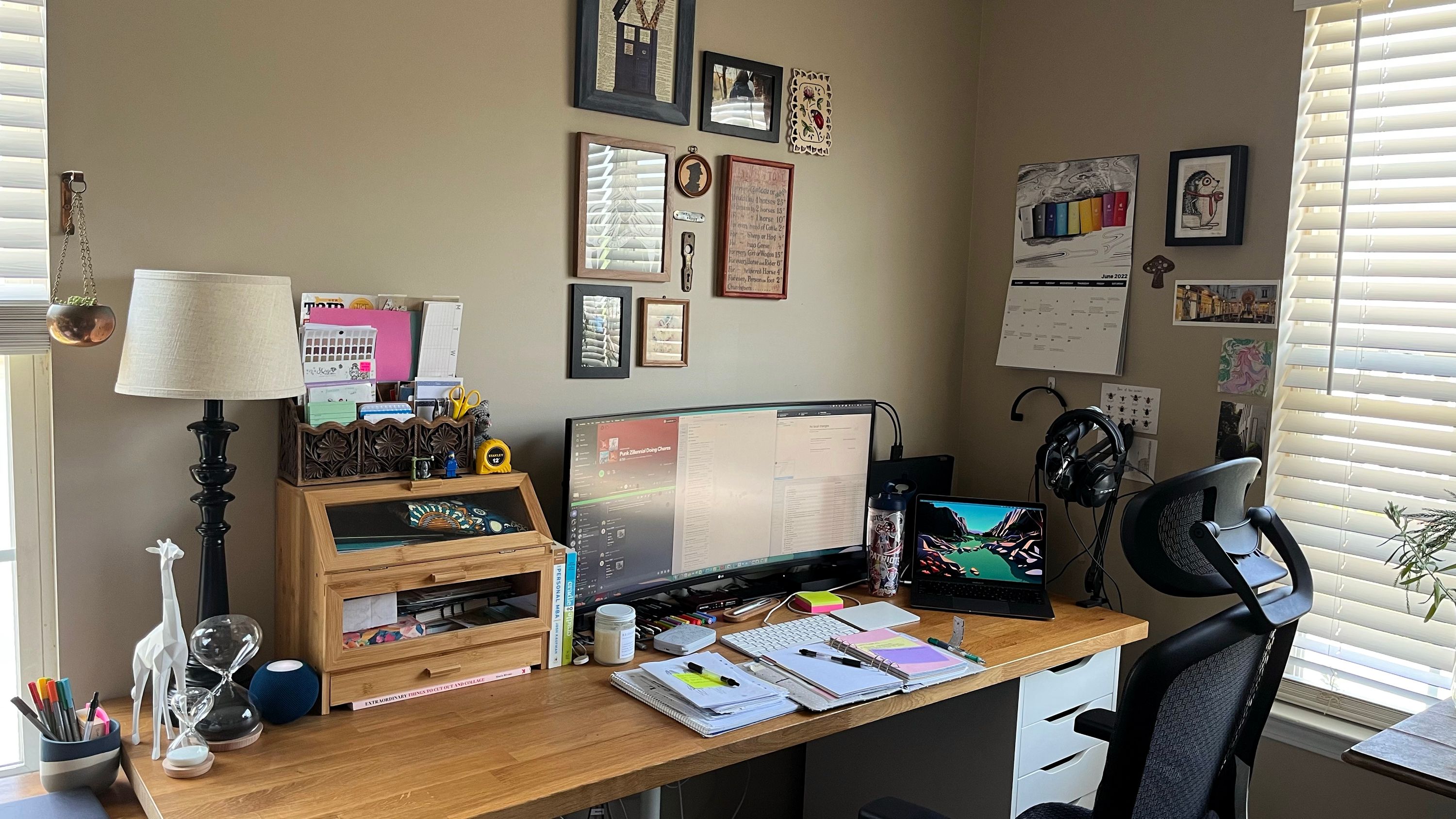 Overview of my desk
Overview of my desk
This desk is situated on the southern wall of my office, between a single south-facing window and a double west-facing window. This means it gets lots of light, but it can also get quite warm in the summer. Above my monitor, I’ve started building out a gallery wall of personal photos, prints I love, and antique or vintage artwork I find while out shopping.
The desk itself is a pair of ALEX drawers, a single ADILS leg, and a KARLBY countertop in oak, all from IKEA. I went with this for the simple fact that I couldn’t find a desk big enough to suit my needs… So I decided to build one. My original needs were going to involve side by side workspaces, one for my personal life, one for my work life, but I nixed that idea a while ago because the desk still wasn’t big enough, and I never wanted to move between the two sides when the time came. So work and personal overlap a bit here, which is something I generally try to stay away from, but in this case I legitimately don’t know where a fifth desk would go.
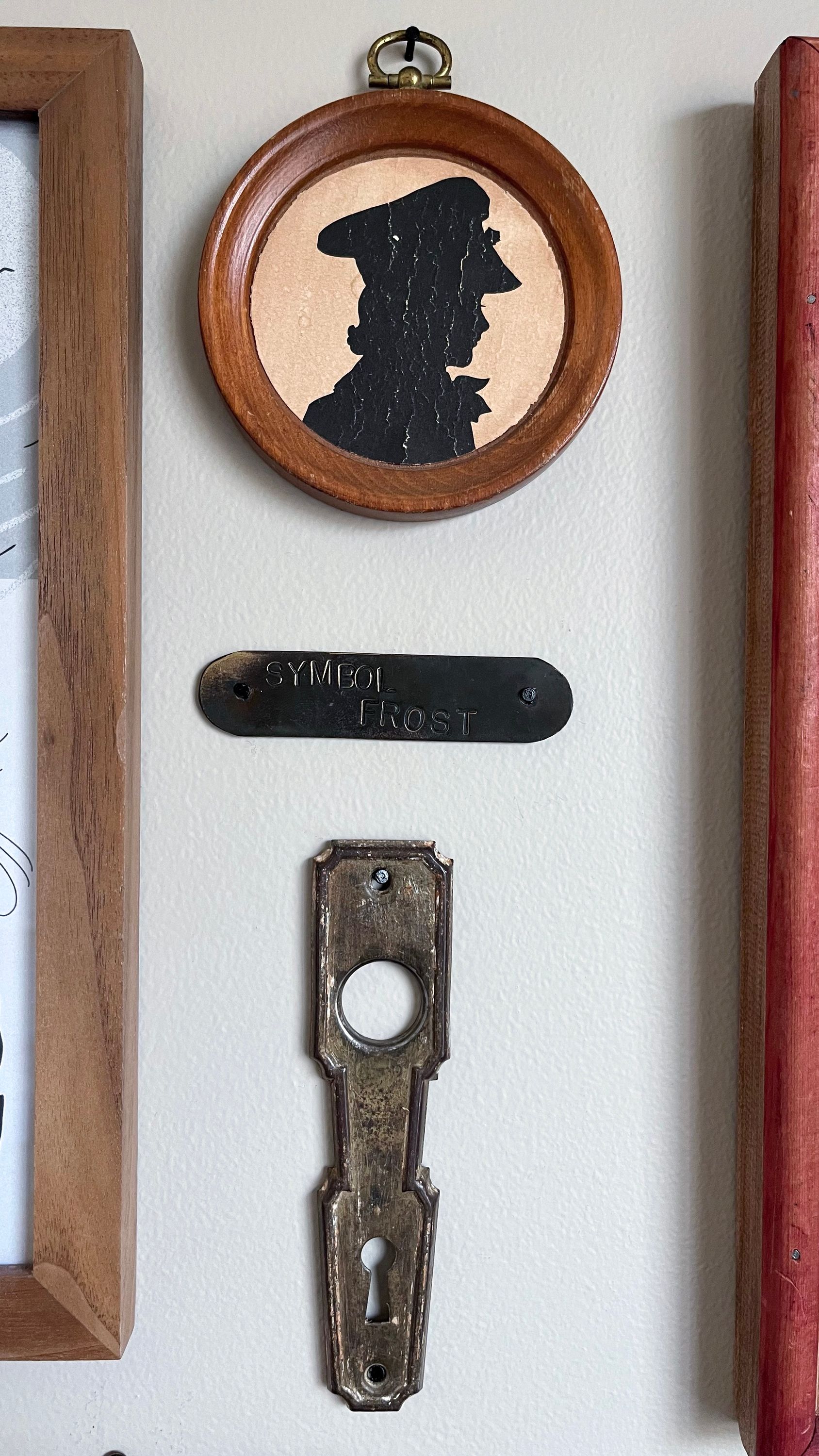 Closeup of the small antiques
Closeup of the small antiques
 The stationary & junk journaling tower
The stationary & junk journaling tower
On the left-hand side of my desk, I’ve got a pair of hourglass timers–the smaller for five minutes, the larger for thirty–originally designed for the Pomodoro Technique. I no longer use that technique in favor of the Compass Method (coined by my good friend Judica), but when I need to kick myself into gear by saying “I’ll just work for a few minutes,” I grab one of the hourglasses and set the sand to falling. It’s enough to get my brain moving sometimes, and won’t interrupt me if I get on a roll, which is something that always bugs me about setting timers on my phone.
I’ve also got a beloved giraffe statue I’ve had since I graduated from university. I’ve never given it a name, but I should; it would give my desk a little more personality. The HomePod mini is perfect for playing music when I’m in the mood, or a podcast when I’m cleaning (because my desk never stays clean for long), especially because sometimes headphones feel claustrophobic at home, though I couldn’t tell you why.
Finally, the tower. The bamboo base is actually a breadbox I found on Amazon, but it suits the needs I had: one, to store some of my stationary supplies close to hand without hiding them, and two, to make sure I didn’t just have a pile of nonsense on that corner of my desk. Now there’s no room for one! Inside & below the breadbox, I’ve got an assortment of things from collage books, to washi tape, to stickers, to random pieces of paper I liked the look of. All of these are destined to be used in my junk journal, a delightful hobby wherein I journal using found objects to catalog what’s on my mind.
On top, in a mid-century modern letter organizer, is even more stationary supplies, joined by a gorilla, a blue spaceman named Benjamin, and Gerald, the wolf crocheted for me by one of my best friends. The 12’ tape measure is a recent addition. The number of times I’ve wanted to take a quick measurement of a space and not have the energy to go down to the garage and find one of the half-dozen somewhere in the tool bench was too high. So I bought one to keep in my office, another for my purse, and a third to go with me when I go down to our neighborhood pond.
Between the crafting tower and my monitor, I’ve got two books that I’m slowly making my way through–The Personal MBA and Cradle to Cradle. Both are wildly interesting but not the sort of book to be read while snug in bed, so I keep them where I see them everyday.
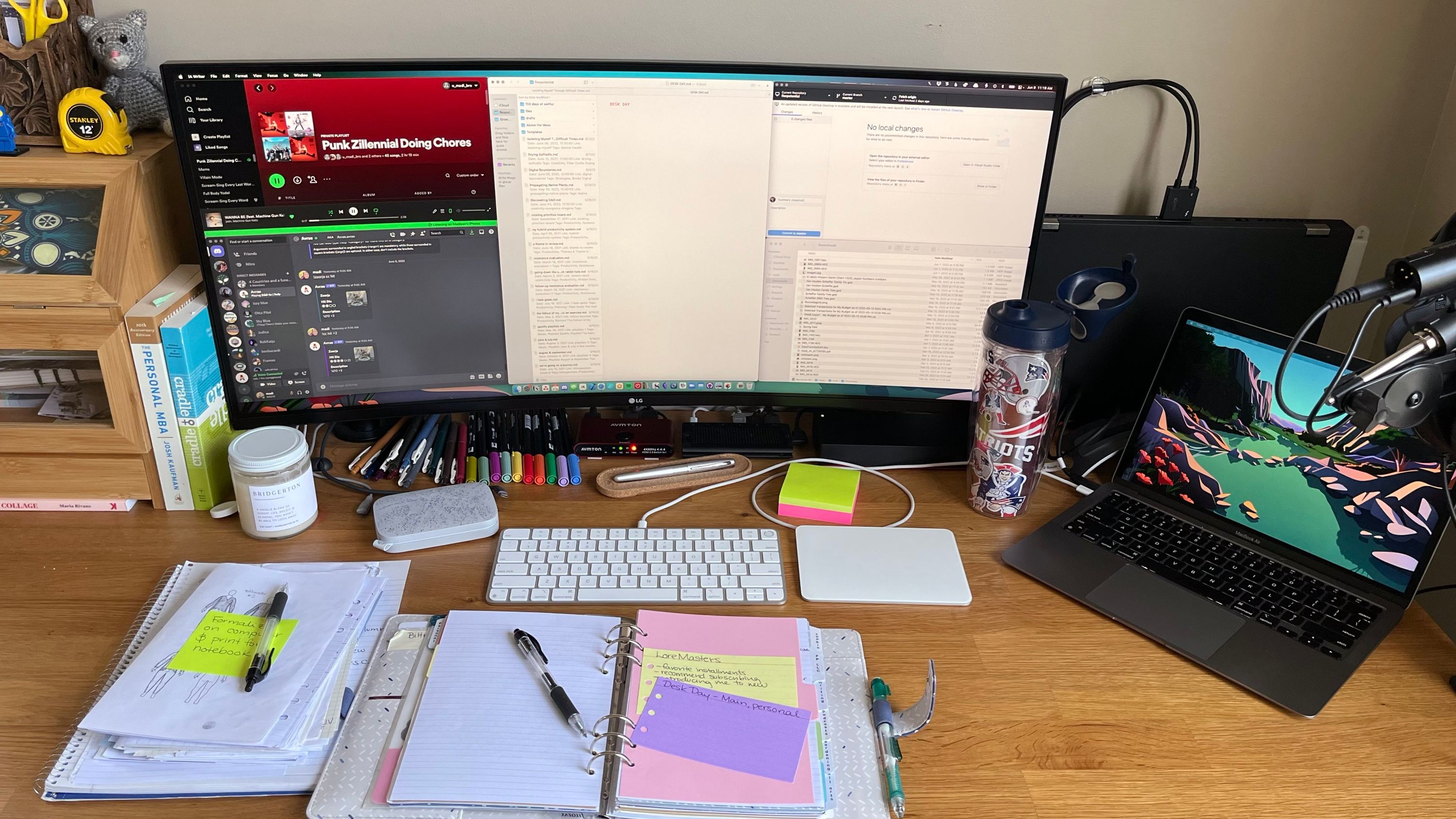 Closeup of my computer area
Closeup of my computer area
Finally, my main workspace. I’ve got a pile of colorful pens I use in my journal, a candle based on Bridgerton that was a birthday gift from amazing friend, and an HP pocket photo printer that I use for my junk journaling, but also for recording native flora and fauna in one of my journals. Pen enthusiasts will note I have a Pilot Metro in a cork tray under my monitor–an LG ultra wide that suits me pretty well–but I fear I have no fun ink in it right now, as I mostly use it for writing notes.
Also under the monitor, from left to right, I have an HDMI switch so that I can swap between my personal and professional laptops at the click of a button (and a rearranging of some peripherals, but c’est la vie), a 12 South Dock for my personal laptop, and a gigantic ThinkPad dock for my work-issue massive laptop. I have both laptops seated in vertical stands most of the time, but when I need to video call, as I was this morning, I pull them down and use the integrated webcam. Not the best solution, but it works for now. My personal laptop is an M1 MacBook Air. The longterm plan is to transition it to a family laptop and to get myself a more powerful machine, but this little machine can handle everything I throw at it 95% of the time. Off to the right, I’ve got my podcasting mic and headphones, as well as headset that I use for work, but we’ll get to that eventually.
My planner is usually in front of me (unless I’m feeling crowded, then I’ll nudge it to the side, ready and waiting for ideas, thoughts, or notes to get tossed into it. The ominous and ever-present pile of papers to the left of my journal are items I’m trying to re-home to their proper place; some need to be put on the computer, some need to be formalized, and others just need my eyes on them one last time before they get sent to the compost, but the pile persists, no matter how many times I tell myself I’ll get through it today.
That’s it for this month–next time, I’ll show off my writing desk. It’s not half so complicated and much smaller, but does have a bookshelf right next to it, so I may just get distracted and show those tomes off too.
13 June 2022
desk-day
office-organization















